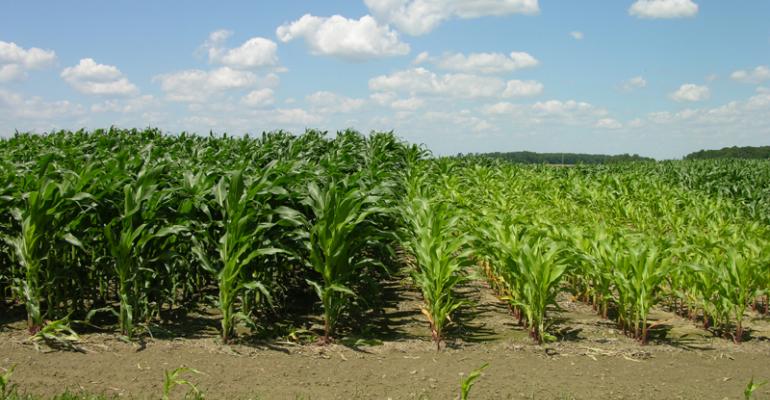
Tuesday we finally had a USDA report we can tolerate—a meaningless report. Here is a quick recap:
US 19/20 Ending Stocks
Corn= 1.892 bil, unch from last month.
Soybeans= 425 mil, vs 424 mil last month.
Wheat= 940 mil, unch from last month.
World 19/20 Ending Stocks>
Corn= 297.3 mmt, vs 296.8 last month.
Soybeans= 102.4 mmt, vs 98.9 last month.
Wheat= 287.1 mmt, vs 288.0 last month.
Wheat
USDA offered zero changes to the March S&D projections, vs. last month. Exports have been a bright spot this year, helping to reduce US carryover. It is interesting to ponder the world ending stocks with a focus on China. While global ending stocks seem rather burdensome, as has been the case for several years, 52% of global stocks are held in China.
(China treats their ending stocks as a state secret, consequently it is difficult to really know what they have. If you doubt that statement, then you need to only remember when just a few years ago they offered significant revisions to their published numbers. They reached back more than a decade to adjust production and usage numbers to raise their ending stocks figures. Had they not made these adjustments they would have been on a statistical pathway to run out of corn. After adjustments, they suddenly had plentiful supplies. If they are making significant adjustments to the previous 10 years of data, it is already clear that they themselves knew their data was wrong. And, since they see the data as a state secret, you have to decide what this information is worth.)
According to USDA’s China data, they have ending stocks of wheat totaling 148.26 mmt (million metric tons). This is 111% of their annual production. Hmmm? Keep in mind that they import 4.0 mmt wheat and they just purchased 1 mmt globally during the past few weeks. Does that sound like something you would do if you had more than a year’s worth of production sitting around that nobody wanted?
Notable correction
The wheat market has experienced a notable correction process during the past several weeks and technical conditions are not conducive to building downside momentum. Today’s fundamental focus from USDA offers nothing new. Wheat is poised for an upside turnaround and price recovery phase.
It will be interesting to see if China decides to buy some U.S. wheat. Those rumors exist and I believe it is a likely outcome. However, will this take place soon, or not until the U.S. wheat harvest is closer to its arrival? If China buys U.S. wheat, I think we should seriously question the China wheat data in today’s report. If that is the case, how can we be confident in any of China’s statistics, which they guard as a state secret?
Corn
USDA left the entire US 19/20 corn balance sheet unchanged from last month. However, they did lower the average farm price to $3.80.
Let’s take a look at China’s corn data:
According to USDA, China has ending corn stocks of 199.07 mmt. This represents 76% of the country’s annual production. When contemplating how much you want to believe that number, consider that just a couple of years ago they halted plans to expand ethanol production and imports as part of their plan to improve air quality, citing declining corn stocks.
Also, if they consider their grain stocks to be a state secret, do you think they are more likely to hide the size of their surplus, or the size of the deficit? Exactly! In the eyes of this author, it remains highly probable that their corn stocks are much tighter than today’s USDA data implies.
Soybeans
USDA also left the US 19/20 balance sheet data unchanged from last month. Crush data to-date suggests that they will eventually need to increase crush. Eventual export data will depend significantly on what China ends up purchasing under Phase One. If we apply the 85.0 mil acre scenario to 2020 production, pegging the 2020 yield at 50 bpa, it will result in carryout rising during the 20/21 marketing season. HOWEVER, if we use FarmFutures.com acreage survey of 80.6 mil acres, we will see U.S. carryout decline by 85 mil bushels next year, falling to 340 mil bushels. If we lean on USDA’s Ag Outlook data from three weeks ago, they had carryout pegged at 320 mil bushels, using their 85.0 acreage estimate and increased demand projections.
As you can see, the real story for soybeans is not today’s S&D projections, it is the number of acres that U.S. farmers ultimately plant to soybeans. At present, the corn vs soybean price structure is not enticing any soybean acreage beyond normal rotational decisions.
Outside factors overrule fundamentals
Corn, soybeans and wheat prices have been much more mesmerized by outside market factors and the emotions of fear and uncertainty, than about any fundamental story-line during the past couple of weeks. I strongly believe that we will all look back on these past several days, weeks from now, and conclude that the fear and panic in the U.S. grain/soy trade was completely unwarranted and misplaced.
The “market” managed to extract from farmers’ hands many bushels of corn and probably soybeans during the final days of February, as emotions strongly influenced decisions to roll or price basis contracts. This same influence chased many small specs out of long positions as well. These panic-based sales were found again this week. It will be interesting to see how the past several days will be seen when you look back on this timeframe from the vantage point of ,say, May 1st.
Mark your calendars and ask yourself then whether or not recent weakness proved to be the start of new price declines, or the head fake that so often occurs just before the real next trend is revealed. Don’t forget—mark your calendar!
Duane Lowry
Senior Risk Manager and Market Research Director
Silver Creek Commodities
Email= [email protected]
Twitter= @DuaneLowry
Phone/text= 563-419-1300
The opinions of the author are not necessarily those of Farm Futures or Farm Progress.
About the Author(s)
You May Also Like






